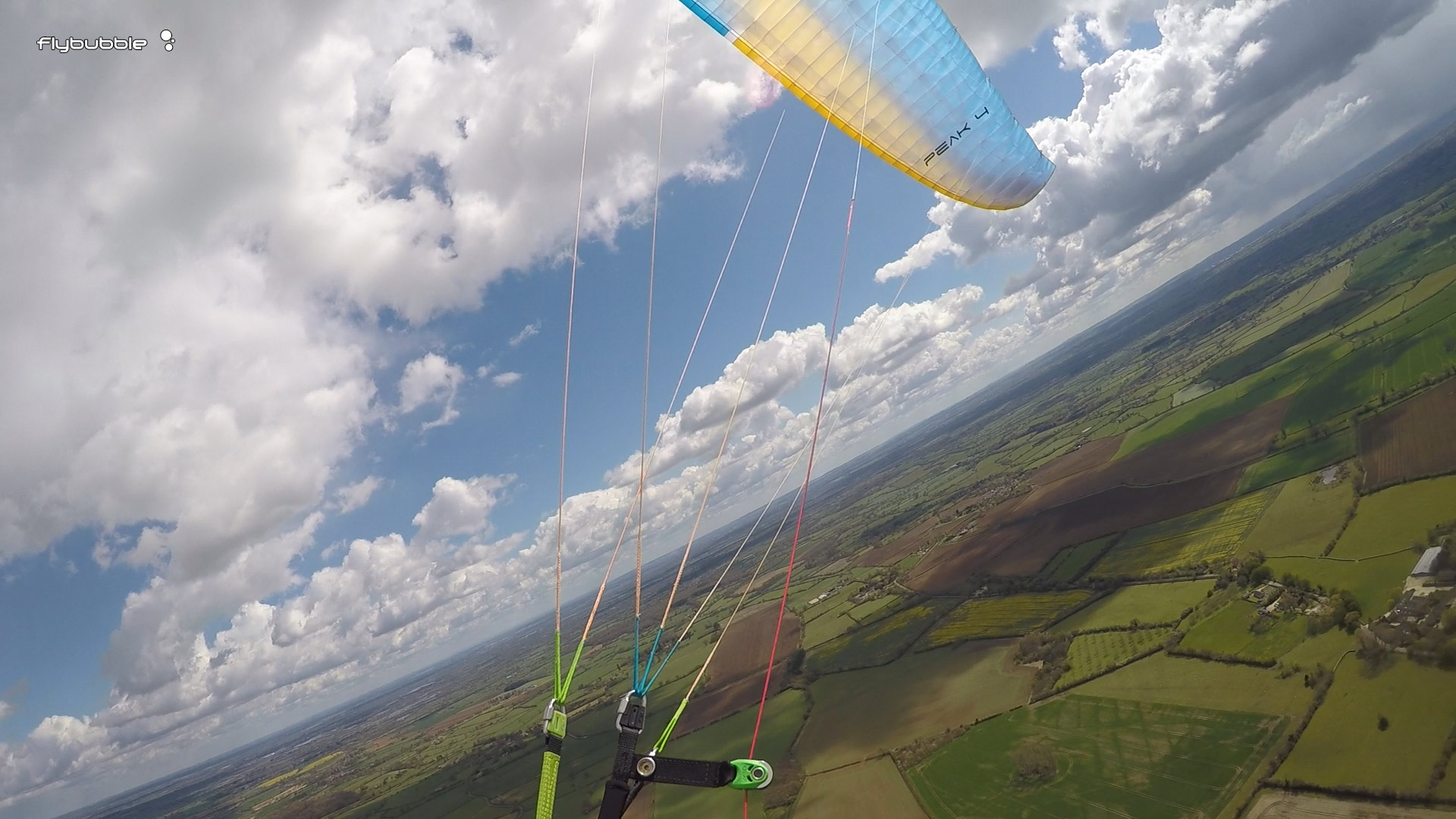
Staying ahead of the game ... the rain squalls were at my back for the first 50km, but as I was pressing on downwind they couldn't catch up to me.
The PEAK 4 (EN D) replaces the PEAK 3 in Niviuk's range and fits squarely in the Performance Class, below the Competition Class Icepeak 8 (CCC) and above the Sports Class Artik 4 (EN C). Intended for pilots who are wanting to do competitions or big competitive XC but don't want the full-on concentration required to keep a high-maintenance hotship flying in cracking conditions. It also offers a unique stepping stone as an 'entry level' 2-liner for pilots unfamiliar with the handling of this recent design innovation.
Construction
I laid it over my Omega XALPS to get an idea of the dimensions. It is a similar shape, with a fatter tip section giving a slightly lower aspect ratio. However, the camber in the nose is noticeably deeper, suggesting it will generate more lift at the same speed. There's roughly double the leading edge (L) before the cell openings, with a much bigger shark nose step (S), offering larger openings to the relative airflow, which suggests fast reinflations and possibly good collapse resistance, although I suspect the aerodynamics around the leading edge of a paraglider is a much more complex science than that.
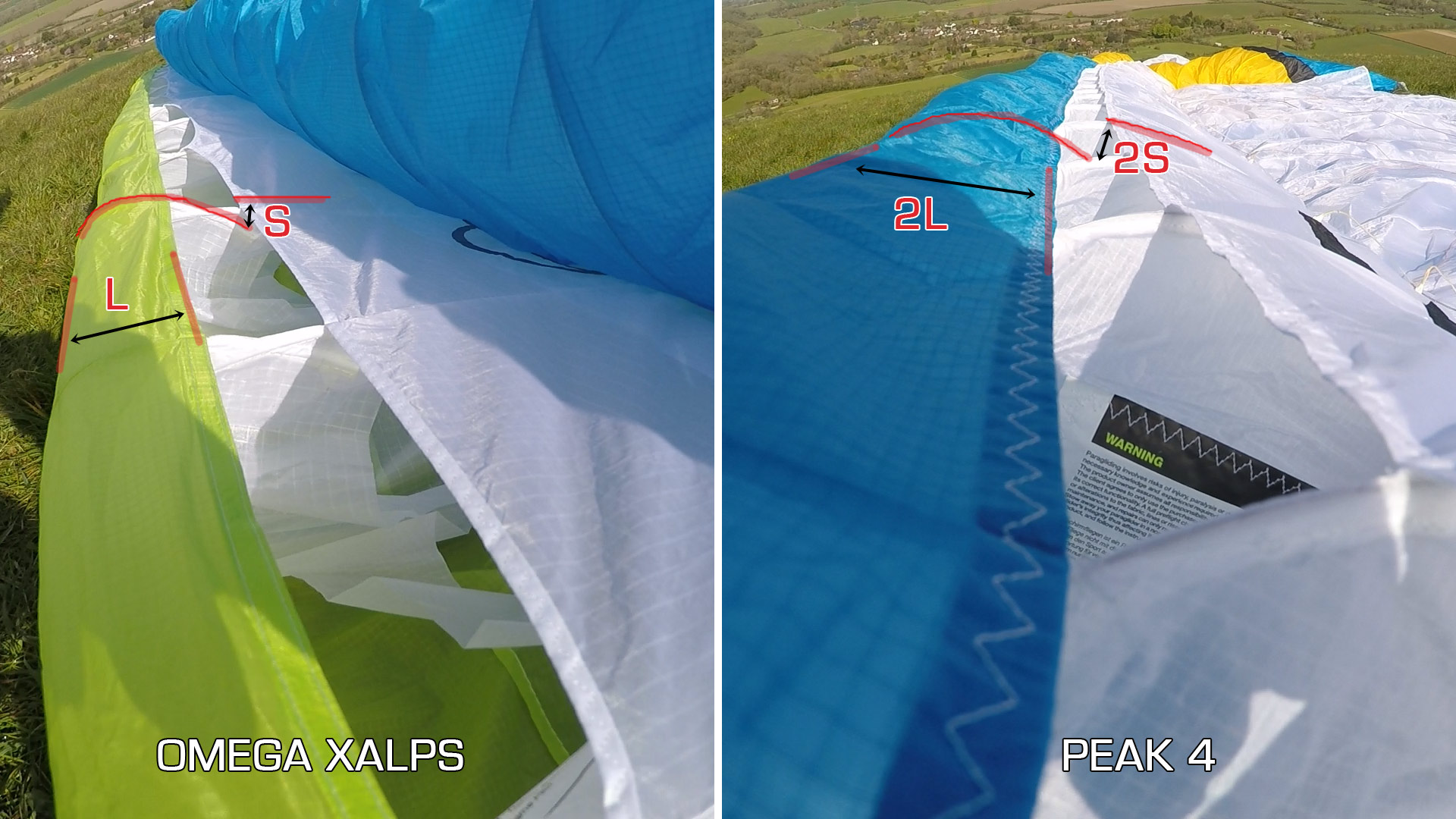
The Peak 4 has a thick deep nose with big volume in the cells.
Two riser divisions and minimal main lines (6) make setting up very easy. I like the t-grips on the rear risers.
Launching
This is challenging on the PEAK 4, for pilots new to the Performance Class. It's hard to keep the PEAK 4 in a 'controlled' position on launch. If you hold it back on the brakes, it drops into a stall from a fairly high position. If you energise it with the As, it likes to leap ahead, requiring a strong pull to check the acceleration. Keeping it in this narrow region between flying off the hill and stalling requires practice, fast reactions and finesse. I expect to see pilots on strong thermic launches fighting with the PEAK 4, unless they've spent time working on their ground handling skills. All two liners can be hard to manage in strong wind if they invert, or very light wind (where the leading edge can't be teased up as well as a 3 liner). Ground handling is an aspect of the PEAK 4 that could be improved, but I feel it's fair to criticise heavily because it's overwhelmed by the exceptional flying characteristics.
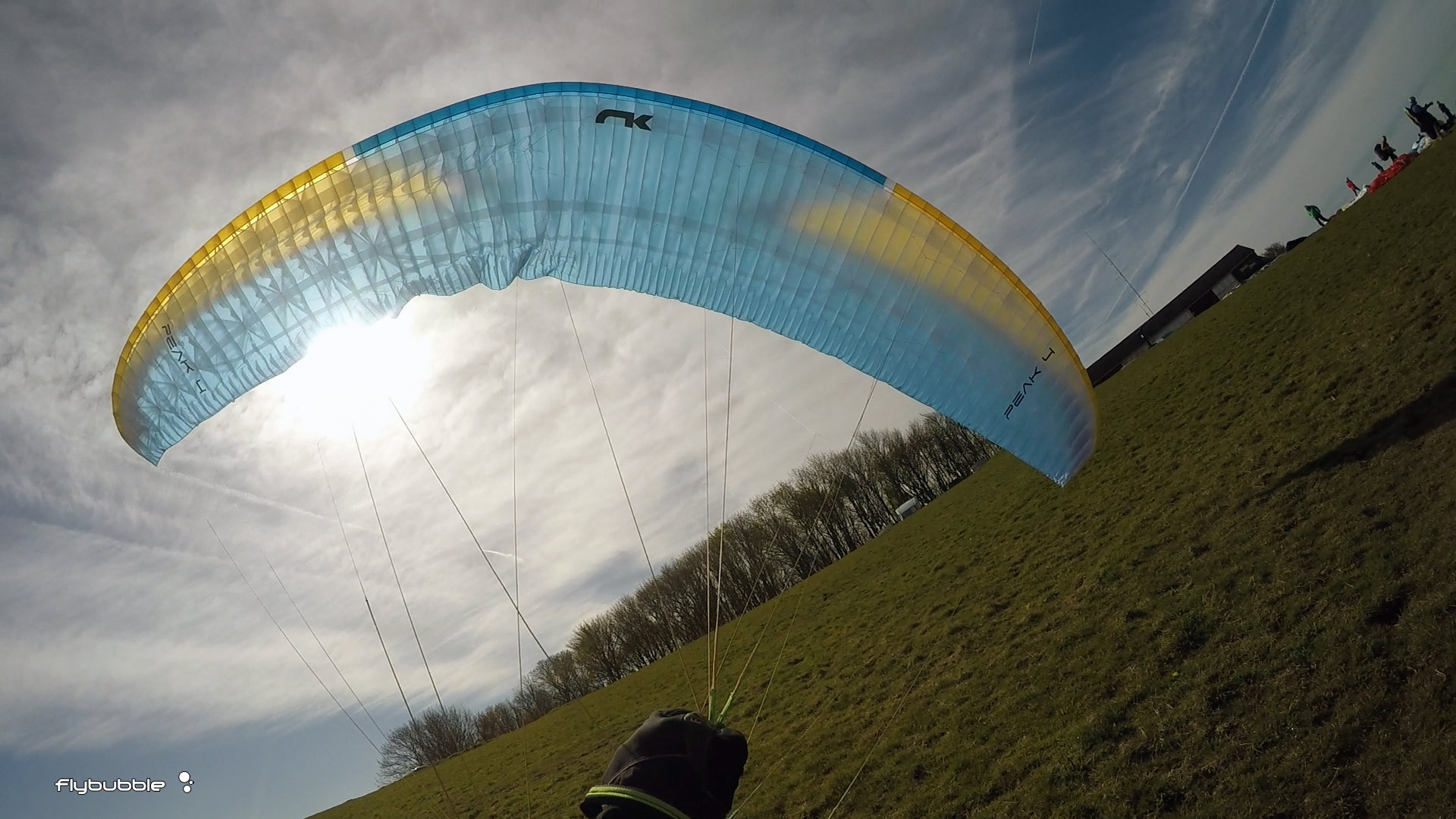
A narrow range between tip stall and overshooting
Of course it's possible to launch the PEAK 4 nicely, and it is great in strong winds due to the slightly lethargic nature of 2-liner rigging. There's also some tolerance for abuse, because the leading edge is so solid once up: even pulling down hard on the front risers does not collapse it.
Slow flying
As I expected from the ground handling, the PEAK 4 has a very sharp stall point, so flying it really slow to come in for a slope/top landing is risky. It can be done, but the wing stops flying very fast, and requires expert level reaction speed to 'mush it in' safely. I prefer my Icepeak 6 in this regard, which provided some lift even with the tips bent back at crazy angles. At normal landing speeds and with clean approaches, the Peak 4 is well behaved.
In the air
Queue epic music with angels. It's like the 'holiday version' of an Icepeak 6. It performs like an Enzo 2 but with the feeling of a full class below an Icepeak 6. It's confidence building because it does precisely what the pilot wants it to do. It felt more like an EN C in that I felt I could handle a lot more wing. But whereas the Peak 3 felt like a neutered Icepeak 6, the Peak 4 feels like an improved Icepeak 6. It has a sweeter nature, more stability, less flit and more flight.

Hooking into the thermal that got me up and away. It required complete commitment - if I lost it, I'd be on the ground.
It's solid, I had no moments where I felt challenged in turbulence, it muscled through it with the reassuring flexing stability that 2-liners offer.
It was responsive: easy to thermal well in light conditions, although the brake was set a bit longer than I'd like. This is probably to protect pilots from getting a surprise at the short brake travel, from 'trailing edge fully engaged' to 'stall point' is short. Because of the initial slack, I found I was thermaling with a half wrap at times.
.jpg)
Scrappy conditions made for scattered traffic and required everyone to pay attention
Tight turns are available by hammering the brake, just before spin point. I found it adequate, I always would like a bit more whip in a turn for those instances when you hit a strike while at full speed, but the Peak 4 offered enough agility that I could hold onto the broken stuff. Mostly the inside brake only, with very little need for the outside control due to the stability of the tip section and the lack of pitch energy.
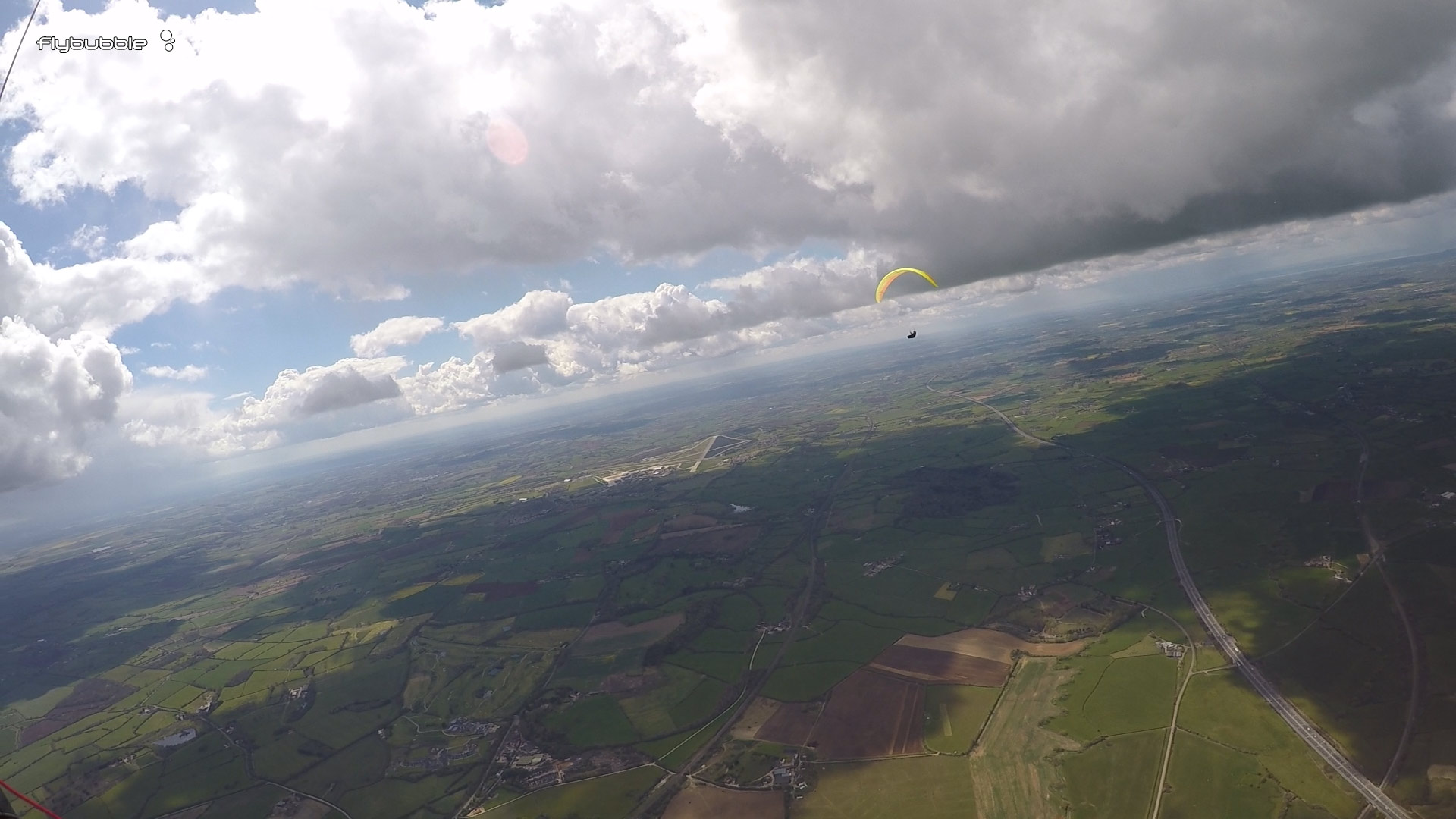
Although it's hard to run away from an Enzo2 when it's on your tail, once Graham Steel had caught up to me it was easy to remain alongside on the Peak 4, which impressed me immensely. The wing is fantastically good! Similar glide and trim speed, it seemed to me.
Performance: I found myself whistling or humming most of the time. It felt like I had an advantage in the air, instead of being on something that was 'keeping up with everyone', I was able to command the sky. I could accompany an Enzo 2 without any problem. I estimate it has more performance than the Icepeak 6, at all speeds.
Big ears worked nicely, felt stable, and could be abused (I did some spiralling with ears and speedbar to avoid snow, it felt confidence inspiring). B3s (pulling outer B lines, producing a tip stall) were a waste of time, because they were so small they didn't affect the descent rate enough.

Testing out the descent techniques on the Niviuk Peak 4. Big ears work nicely thank you.
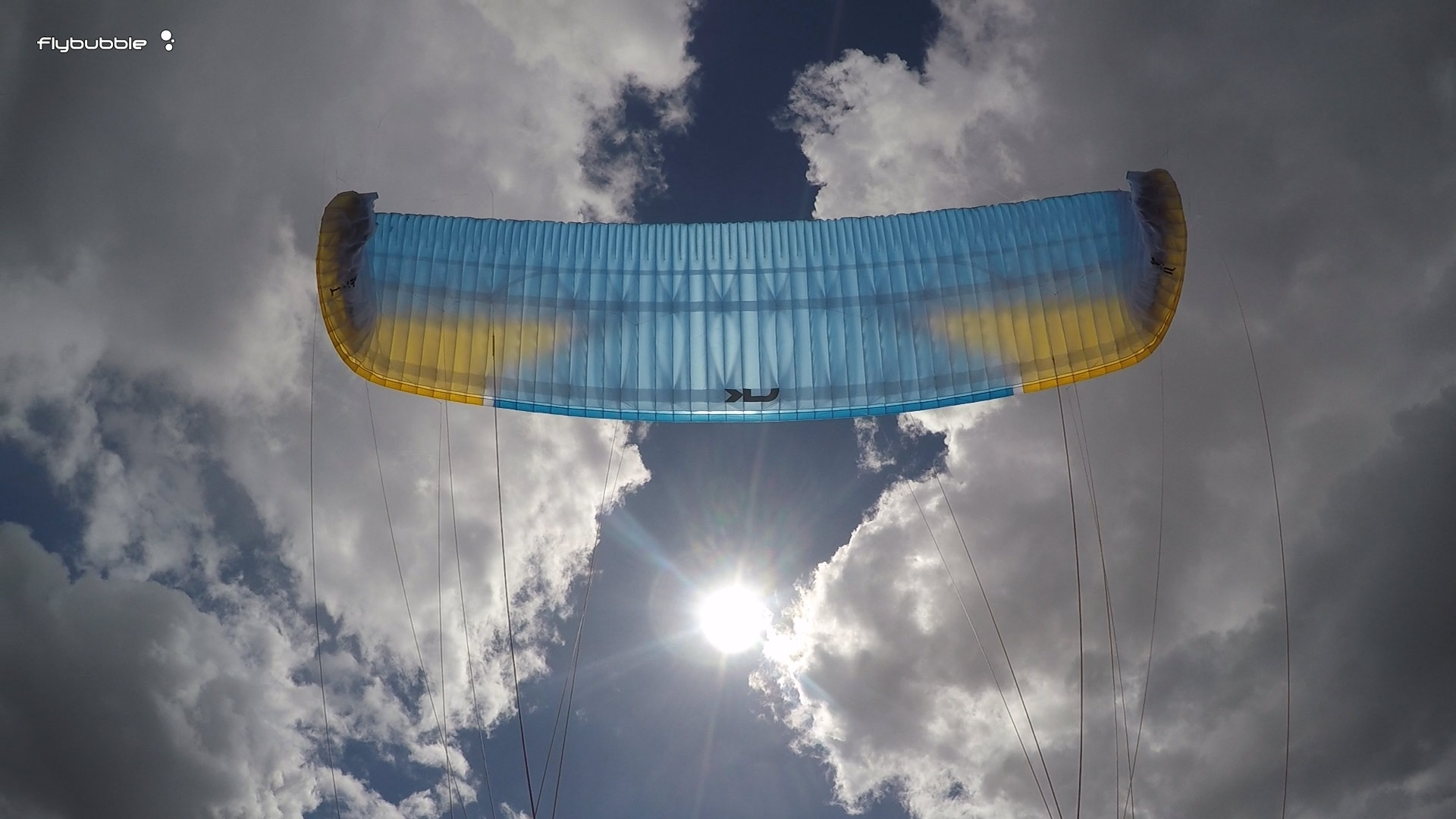
B3s alternative descent technique. OK, the wing does them, but they are rather pointless at this size, so I'm sticking with big ears.
Full speed bar? Yes! I hadn't realised how much I'd missed the feeling of the 2-liner tensioning during transitions. It's like you're in a heavy offroad vehicle with good shocks, instead of being in a hard-sprung ultralight mini that unloads and bounces off the road. Wonderfully secure for mountain flying.
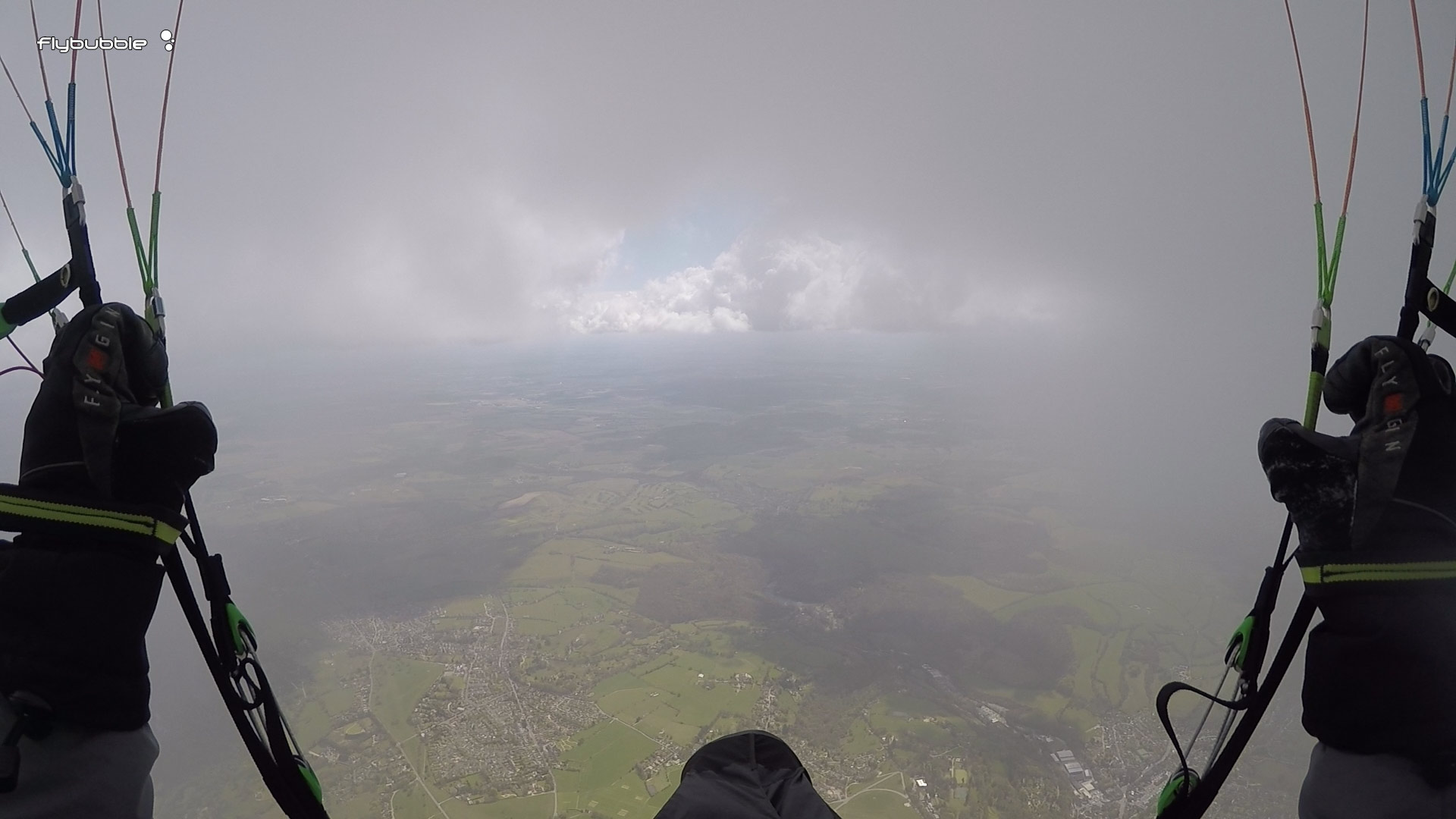
Kissing the cloud at the downwind edge, just before diving into the big gap of sink (sunshine).
Pitch is limited (compared to Icepeak 6), it doesn't jump forward nearly as much so doesn't require so much active flying, you can pretty much leave it to absorb small surges.
Summary
A beautiful wing to fly, but definitely only for advanced pilots due to the sharp stall and challenging launch. The turn is very smooth, a little soft, but it has more turn in it that the Advance Xalps with less brake pressure. It is super solid on bar, and goes like the blazes, easily 20kmh+ over trim speed.
It felt lower aspect than it is on paper, with no wobbles from its solid and cohesive aerofoil. It thermals very nicely and climbs very well with the classic Niviuk feel allowing great sensitivity to the air. In the Performance class, close to perfect.
Find out more about the Niviuk PEAK 4 >
This wing. In the air, damn near perfect. Solid, responsive, performs.
Review conditions
Reviewed by Greg Hamerton: instructor with over 2500 hours, over 150 wings reviewed, flying since 1992. Currently flying Omega XALPS.
Niviuk PEAK 4 23 (85-105kg) flown at 93kg with Skywalk RANGE XALPS harness.
Day 1: Devils Dyke, light thermic conditions, 13 degrees, 15 minutes
Day 2: Devils Dyke, light thermic conditions, 16 degrees, 1m/s climbs to 800m, 1 hour
Day 3: Selsley, 15 degrees (ground) to below zero (cloudbase), XC flight of 150km, 3m/s climbs to 1800m, active sky with overdevelopment. 6 hours

